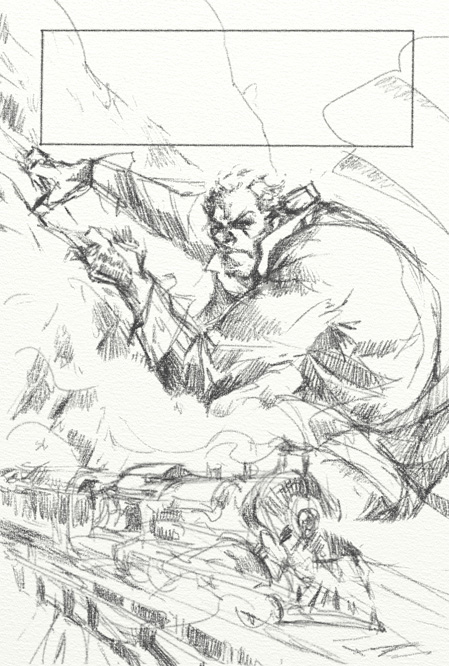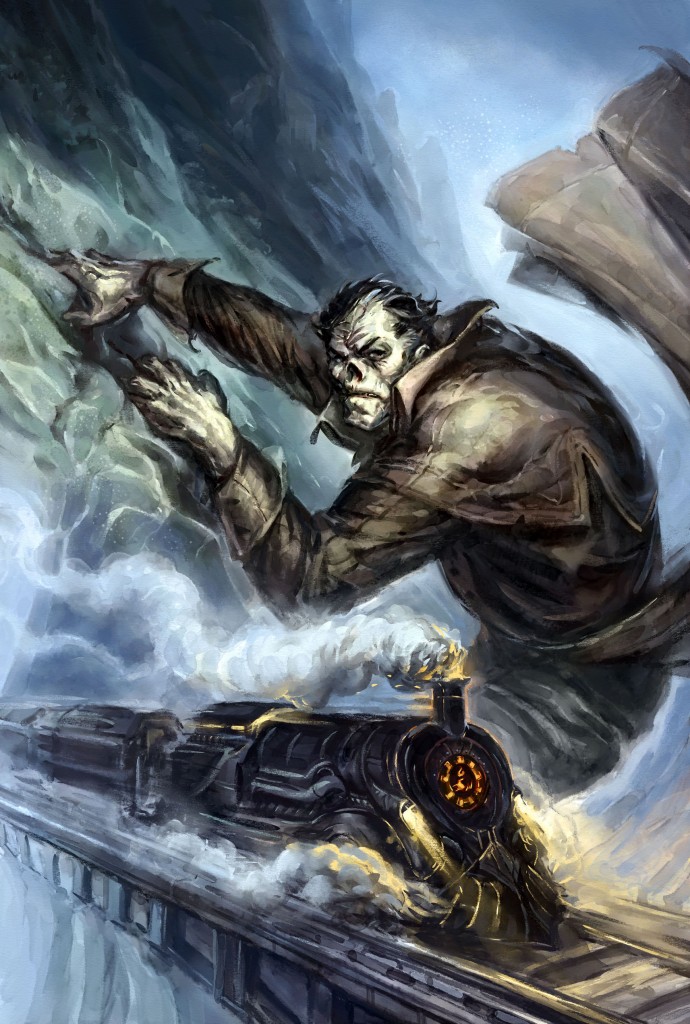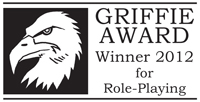Hi Jan. Many thanks for taking time out to answer these questions. What are you working on at the moment?
– Hello! Glad to be answering them. At the very moment I’m drawing the last sketch from a batch of illustrations I need to get done this year. It’s for a rather exciting project, but I can’t say more than that now.
Although many folks have seen your work, we should do some introductions – who are you, what do you do, and where do you do it?
– I am a full time freelance illustrator. This January It’s going to be 6 months since I started doing it for a living. I mainly paint illustrations for RPG books, but I’ve also done a few novel covers and PC game concept art just as a hobby. I do all this in my tiny bedroom in the city of Brno, CzechRepublic.
What sort of preparation did you do for the DH:LoF anthology cover? What material were you provided with?
– I was given all the material I could possibly need. The previous books in PDF, their cover illustrations, image reference for elements in the cover’s description etc. I’ve seen some of the work Scott Purdy’s done in the past, but that was the extent of my familiarity with the setting. The brief contained a narrative which I had to think quite hard about, not very simply put into an illustration. But it gave me lots of freedom in the way characters and objects were to be depicted, so I had it easy there.
When you’re working on a piece, do you prefer a detailed brief, describing every little thing, or a less defined brief, leaving the majority of it up to your imagination?
– For me it’s not a divide between detailed and sparse, rather a matter of “Does the client mean it?” and “Is it the kind of information I need to paint it?”. If the brief is short and vague and the client knows he’s asking me to do my thing, great! If the brief is simply vague, because the client can’t be bothered to write it properly, or if they simply don’t know what they want, that can be a real problem.
Sometimes a brief contains too much information not relevant to the illustration, or information I can’t ever possibly hope to depict. On the other hand, a long and detailed brief can be really good as well, if it’s not overly excessive and if I know it’s safe to follow it.
One of the most fun types is a brief that’s very detailed, but most of the details are not set in stone “it has to look like this” ones, but rather stylistic suggestions. Or reference of objects with a function, or an interesting look I could draw inspiration from. I’m free to invent, to do my thing, but it should stay within the style boundaries implied by the brief. And I get a ton of reference to base my “thing” on, to get me started. That’s very helpful.
Talk us through the work process on creating a piece like the anthology cover?
– The process is usually pretty straightforward. I get the brief, I think it over and if I don’t have any questions for the art director, I start drawing sketches. Sometimes these questions arise only when I’m in the middle of drawing though. At this stage it’s good to be clear on certain issues – which characters are the most important? Is it absolutely necessary that we see all of this object, or can it be partially covered by something? Sometimes I think of a way to incorporate a theme significant for the book, which was not mentioned in the brief.
I ask about all this. Once I get the composition down, I do a slightly more detailed drawing and send that for approval.
Once in a while the client asks for changes at this stage (it could be due to the layout of the book, it may need more empty space somewhere to allow for type and so on), so I do those.
Then I get to the painting itself. I try to send work in progress images to clients, as it’s easier to correct any mistakes at this point. But my process is such that these WIPs often look less than clear and certainly not at all like the finished image. I’m also aware that my art directors are busy people, so I try not to bother them with progress every day or so.
When I’m satisfied with the look of things, I send the “final” image to the client and wait. If there are any changes needed, I do those. If not, and the deadline is still a bit ahead, I let it sit for a while. That allows me to notice and fix small mistakes or details which I wouldn’t have seen after staring at the image for so long during painting.
If all is approved, I upload a high resolution version of the image for the client and happily send them an invoice.
What kind of kit do you use? Are you working mainly in the digital realm?
– Yes, I’m working almost fully digital now. I used to sketch in pencil, but I abandoned that for the sheer comfort of not having to scan the drawings. I do find sketching on paper slightly easier and more productive though, so I may get back to it eventually. I use a Wacom Intuos4 tablet and a piece of software called ArtRage for painting and drawing.
You knew going into the job that Jon Hodgson, AD at Cubicle 7, had been working on it before other commitments forced him to step aside. You produced an amazing result, making the project completely your own, but was it daunting at all stepping into another artist’s shoes?
– It should’ve been daunting, but I felt so good about being recommended by him that I somehow forgot all about having to fill his shoes. I considered doing the cover in his style, or attempting to do so at least, but abandoned the concept soon after. It all clicked and I fell into my usual process, doing what I do without thinking about the circumstances of the job.
What’s on your plate work-wise over the next little while?
– I will continue to do what I’ve been doing for most of my first 6 months – painting colour plates for the wonderful Guide to Glorantha by Moon Design Publications. There are 16 of them in total and I’m just now pushing a half of that. A lot of work to do till April. That is a great example of the detailed, yet fun and free type of job, by the way.
Other than that I have this secret project for Cubicle 7 I mentioned, which will also be a lot of fun. That one is certainly daunting.
It’s nearly Christmas! What are your plans for the holiday?
– Very simple plans they are. I’ll be going back to my hometown to spend Christmas with my parents, going on long walks with the dog and trying not to eat my weight in delicious Christmas cookies.
Many thanks for all your answers. Now we’re done, what are you off to do now?
– Thank you for asking me! I’m off to have dinner and then I’ll be finishing that mysterious sketch.
You can find out more about Jan and his amazing work at http://janpospisil.daportfolio.com/





